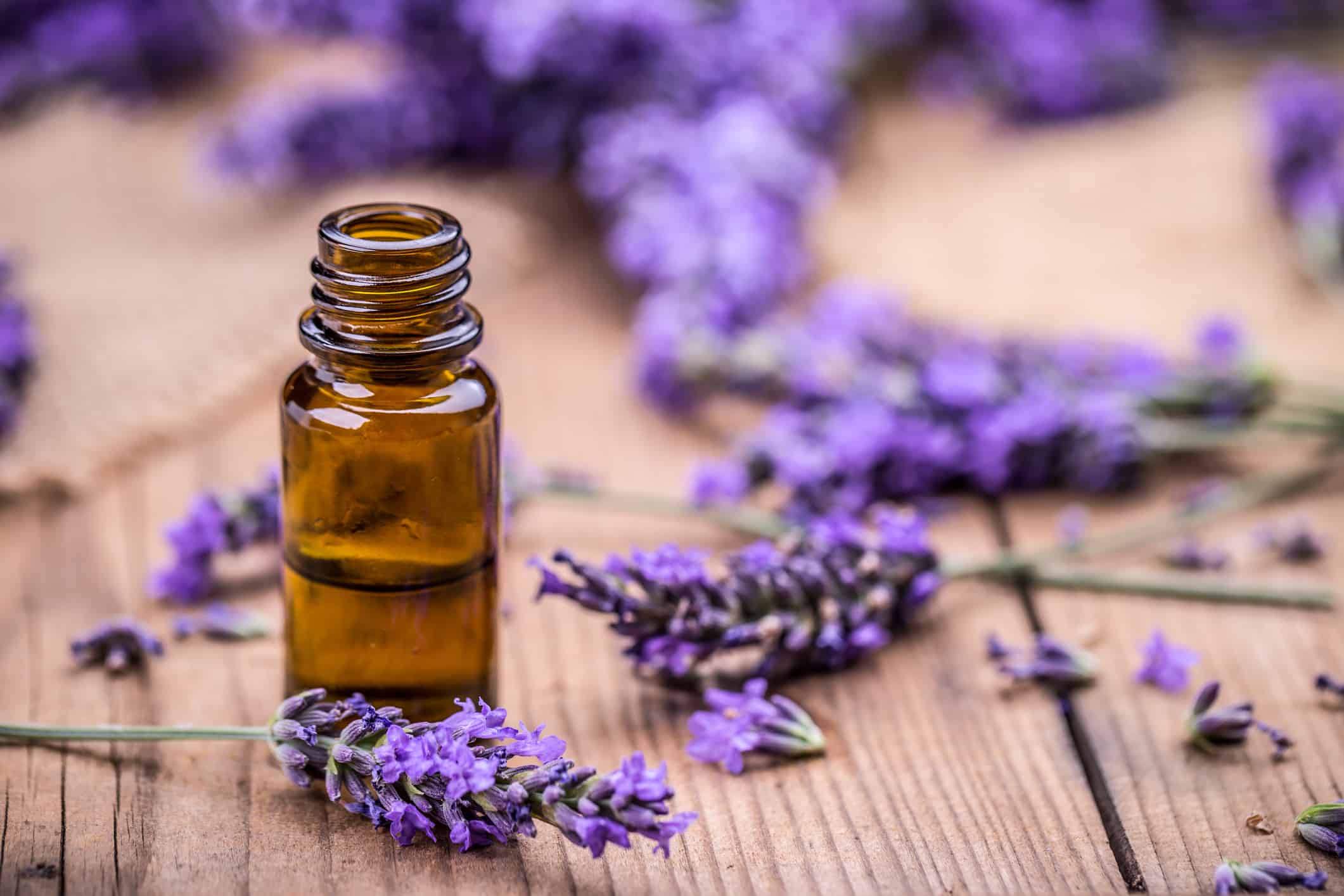Using Essential Oils in Horses? Consider the Pros and Cons

Essential Oil Basics
Essential oils are composed of chemicals extracted from plant leaves, stems, wood, bark, and/or fruits. Together, these compounds are classified as secondary plant metabolites, which plants produce to survive in the environment. Unlike primary metabolites, secondary metabolites do not participate in basic life functions such as cell division and growth, respiration, storage, and reproduction. Instead, secondary metabolites protect the plant in some way (e.g., against insects, disease-causing organisms, and the sun’s ultraviolet rays).
The list of available essential oils is extensive. Some of the more commonly used essential oils in modern medicine include basil, bergamot, chamomile, devil’s claw, eucalyptus, frankincense, geranium, ginger, lavender, lemongrass, peppermint, tea tree, valerian, white willow, and yucca.
Benefits of Essential Oils: What the Science Shows
In vitro (laboratory) study results show some essential oils have marked antimicrobial activity against both bacteria and fungi (Ebani and Mancianti 2020). This includes multi-drug-resistant strains of bacteria such as Pseudomonas spp. and Staphylococcus spp. Essential oils not only have bactericidal properties, but some reportedly also exert antibiofilm properties. Biofilms are conglomerations of bacteria and the protective “slime” they produce that forms an impenetrable barrier around disease-causing organisms.
Essential oils also show promise as insecticides. One study demonstrated that tea tree oil extracted from Melaleuca alternifolia had excellent in vitro adulticidal activity against stable flies (Dillmann et al. 2020). These blood-sucking flies are a nuisance to horses, interrupt feeding, and can induce a flight response due to their painful bites (even in the middle of competitions). Biting flies can also transmit diseases, including equine infectious anemia.
Another group (Cox et al. 2020) reported that a commercial herbal topical spray used once daily for 28 days appeared to effectively manage insect bite hypersensitivity. The spray included extracts from lemongrass, peppermint, camphor, may chang, and patchouli. These essential oils were selected due to their previously demonstrated immunomodulatory (alters the immune response), antihistamine, antipruritic (anti-itch), anti-inflammatory, anti-allergy, analgesic (relieves pain), and larvicidal (kills juvenile insects) activities.
One published study also supports lavender’s widely accepted role as a calming agent when used as aromatherapy, as determined by decreased heart rate variability in eight dressage horses (Baldwin and Chea 2018).
Essential oils, specifically carvacrol, are being explored as antiparasitics (Trailovic et al 2021). This would be a welcome solution to the widespread resistance of roundworms (Parascaris sp.) to all three major anthelmintic (deworming) families.
Generally speaking, aromatherapy uses natural essential oils to enhance animals’ psychological and physical well-being—a broad and sweeping description. As such, these products, which are not and cannot be classified as drugs, are also used for managing painful musculoskeletal conditions, immune stimulation, antioxidant activity, calming solutions, and gastric ulceration. Essential oils can also be administered via inhalation using a commercial nebulizer to improve respiratory health.
Consider These Other Benefits
Using essential oils in conjunction with, not instead of, modern medicine and with a veterinarian’s expertise, we can:
- Reduce the need for systemic antibiotics. Using products capable of fighting infections without antimicrobials promotes good antibiotic stewardship and alleviates the pressure of creating or treating antibiotic-resistant strains of pathogens.
- Minimize the need for anti-inflammatory medications and their side effects. Nonsteroidal anti-inflammatory drugs (e.g., phenylbutazone or “Bute”) might contribute to gastric ulceration or colitis, and corticosteroids have the potential to induce laminitis.
- Maintain intestinal microbiome health. Any medication has the potential to disrupt the delicate balance of microbes found in the cecum and colon. Dysbiosis can result in diarrhea, behavior changes, a compromised immune system, and other negative outcomes.
- Reduce environmental contamination with drugs, drug byproducts, or chemicals.
Safety
Just like other complementary and alternative therapies, horse owners tend to consider essential oils universally safe. In reality, the safety of essential oils remains largely undetermined, and both their positive and negative properties need further investigation.
In mice and rats, essential oils are associated with liver, kidney, and reproductive toxicity and changes in blood vessels and can cause oxidative stress (Ebani and Mancianti 2020). Further, a recent series of articles published in the European Food Safety Authority Journal warned consumers to consider essential oils to be skin, eye, and respiratory tract irritants. Human study results report photosensitization following exposure to sunlight and dermatitis after applying essential oils topically. Lavender, peppermint, and tea tree oil appear to be the biggest offenders.
As with joint supplements and other complementary and alternative therapies, choose a quality product. Substandard oils might not contain the listed ingredient at the indicated concentration or amount. Products might be contaminated with other ingredients that can affect your horse’s health.
Finally, be aware of which essential oils equestrian governing bodies prohibit. The FEI, USEF, and some Jockey Clubs have included various herbs and oils on their prohibited substance lists.
Take-Home Message
To use essential oils in a safe and meaningful manner, work with an educated aromatherapy veterinarian. You can find one searching the membership directory of the Veterinary Medical Aromatherapy Association (www.vmaa.vet).

Related Articles
Stay on top of the most recent Horse Health news with


















